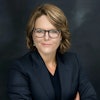With higher wages, higher supply costs, and stagnant insurance reimbursement rates, dental practice leaders are looking for innovative ways to increase same-store revenue.
In some cases, they're tracking their current processes and protocols to identify inefficiencies and implement solutions. In other cases, they're deploying technology to make it easier to schedule patients, provide treatment, and collect payment.
In this first part of a two-part series, we look at clinical innovations that are driving same-store growth in dental practices from solo locations to groups with more than 400 practices.
Same-day care
People are busy, and they don't want to take more time off from work or arrange for someone to watch their kids if it can be avoided.
"Chart reviews are crucial," David North, CEO of Squire Dental, which has 20 affiliated locations, said. "If someone is scheduled for a crown on the upper-left quadrant, is there anything else that needs to be treated too? We look at who's coming in for hygiene and typically find two or three patients a day with outstanding treatment. It's our goal to make it easy for patients to finish receiving the treatment they need to be healthy."
Hygiene therapy
Dental Care Alliance is deploying guided biofilm therapy, which replaces cavitrons, reduces tension on the hygienists' wrists, and condenses the length of hygiene appointments, according to Shawna Eury, the South division president of Dental Care Alliance (DCA), a dental service organization (DSO) that has more than 400 affiliated practices.
Periodontal treatment protocols
DCA also deploys a periodontal protocol to help providers remember the guidelines for diagnosing scaling and root planing, periodontal maintenance schedules, and adjunctive services to improve gum health, Eury added. Similarly, InterDent, a DSO with more than 150 affiliated practices, utilizes treatment plan "explosion codes," which are built around the various periodontal diagnoses to help inform patients of associated therapies.
Specialty dentistry
Another way to increase same-store growth is to increase the number of services each practice provides.
 Shane McCarthy.
Shane McCarthy.
"I recommend frequently reviewing the specialty services that each practice is referring outside your network to identify opportunities to increase referrals to specialists within your network," Shane McCarthy, chief operations officer (COO) for InterDent, said.
Virtual ortho consultations
When COVID-19 hit, Parks Orthodontics offered virtual consultations in which the orthodontist and the patient would talk online. Since then, it's introduced asynchronous virtual consultations with a call to action to "Start your digital smile assessment" on the website.
The potential patient completes a questionnaire and submits pictures through an online portal, the doctor then creates a provisional treatment plan, and the treatment coordinator presents the proposal to the patient virtually.
 Allison Hale.
Allison Hale.
"Since introducing the asynchronous consultation model, 42% of patients come in for records, and of those, 97% start treatment," Allison Hale, the COO of Parks Orthodontics, said.
Access to care
"In our practices, we're looking to expand same-store growth by really looking at what's happening to the patients when they're in the office," Teresa Williams, chief financial and operations officer of Dental Express, a dental group with six affiliated locations, said.
"How much care can we provide for them in each appointment? Sometimes that includes expanding the size of our team; expanding the breadth of knowledge of our doctors and the care they can provide; or even adding capacity, adding operatories, and adding additional technologies and equipment."
Dr. Alap Choksey is vice president of clinical services of the North American Dental Group (NADG), which has about 300 affiliated practices. NADG expanded services at many of its locations to include dental implants, clear aligners, wisdom teeth extractions, and sedation. NADG also leverages digital workflows, including 3D printing with SprintRay for crowns and nightguards and surgical guides for full-arch hybrid prosthetics.
X-rays with artificial intelligence annotations
A picture's worth a thousand words, and adding artificial intelligence (AI) annotations to x-rays helps patients see where they may have cavities, bone loss, periapical radiolucencies, and other dental concerns.
 Dr. Bradley Dykstra.
Dr. Bradley Dykstra.
"Our case acceptance has gone up since we added Pearl to our Apteryx digital imaging," Dr. Bradley Dykstra, the founder of MI Smiles Dental Group, said. "The response of new patients is, 'Wow, I've never seen this before and now after you've shown me what's there, I understand.'"
Dr. Choksey also found that adding AI helped with NADG' same-store growth.
"We added Overjet to Apteryx. It's focusing us on being more efficient. Werre leveraging the AI annotations for insurance claims and getting approvals faster, which minimizes resending claims, frees up our front office team, and allows us to see more patients."
Streamline operations
OMS360, a support group for oral surgery practices, drove 40% organic growth in the first half of 2024 after implementing a new patient workflow.
"We literally did a time study of our patient journey, the staff, and even the surgeons. From this, we identified six phases of the patient journey and detailed how long each one took for our highest-performing practices," Trevor Maurer, the CEO of OMS360 said.
Since then, it rolled out best practices to help all of its offices achieve success in the six areas: patient access, scheduling, insurance verification, treatment planning, treatment, and account reconciliation.
Driving same-store growth through clinical innovation
From adding additional services such as clear aligners and dental implants to providing better training for team members, dentists and DSO executives are finding ways to drive same-store growth even in this tough economic environment.
Watch the video to below to hear from several dental leaders on the subject of same-store growth.
In part two of this series, we talk to dentists and DSO executives about operational changes they've made to increase revenue year over year.
Beth Gaddis is the editor in chief at Planet DDS, a dental technology company specializing in cloud-based practice management systems, digital imaging, and dental marketing services. Previously, Gaddis was the marketing director for two large dental service organizations. Prior to entering the dental industry, Gaddis was a journalist for 16 years in a variety of roles, including as a TV news producer at the CBS affiliate in Boston. You can connect with Gaddis on LinkedIn.
The comments and observations expressed herein do not necessarily reflect the opinions of DrBicuspid.com, nor should they be construed as an endorsement or admonishment of any particular idea, vendor, or organization.




















